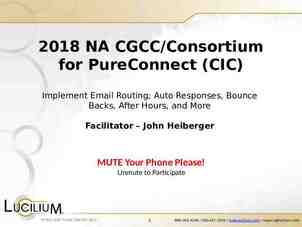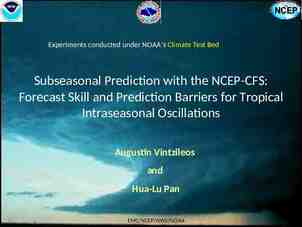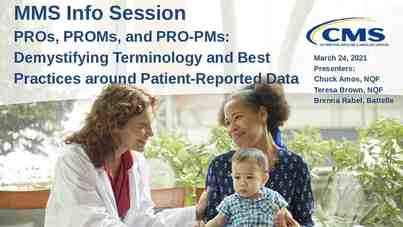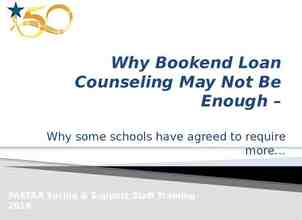Facility Asset Manageme nt A Working Model
23 Slides501.25 KB
Facility Asset Manageme nt A Working Model
Building Life Cycle Facility Asset Management A practical approach to manage vertical assets from cradle to grave in a proactive and efficient delivery model following industry standards and best practices.
Building Life Cycle (ISO 55000) An Asset Management standard defines an asset as anything that will create value for an organization, not necessarily just physical production assets. An Asset Management system provides a structured approach for the development, coordination and control of asset-related activities across their life cycle. Your focus should be in the understanding and management of the value and risk to your organization, so that you can set the principles by which you intend to apply Asset Management to achieve organizational objectives.
Building Life Cycle (ISO 55000) The four components of an Asset Management system are: Asset Management Policy Identifies the Intent, Scope, Principles and Responsibilities in implementing Asset Management as a business model and promoting continual improvements. Asset Management Objectives Capture the outcome or performance required from an asset in order to deliver your organization on how to leverage your assets to deliver on your strategic plan Asset Management Strategic Plan Documented information that specifies how organizational objectives are to be converted into Asset Management objectives, the approach for developing asset management plans, and the role of the asset management system in supporting achievement of the asset. Asset Management Plans Is a tactical plan for managing an organization’s infrastructure and other assets to deliver an agreed standard of service
Building Life Cycle (ISO 55000) Facility Asset Management requires a solid foundation in which to build off, which should include: Total Cost of Ownership An Asset Registry Facility Identification Proactive/Preventative/Reactive strategies Cradle to Grave accountability
Total Cost of Ownership There are several factors that hinge on the total cost of ownership for a facility, such as: - Capital – when an asset is originally built - Operating costs – custodial, pest control, contracted services, insurance et cetera - Maintenance costs – proactive, preventative reactive maintenance or run to failure - Utility costs – power, natural gas, water, sewer - Capital and Operational upgrades – renovation to space, replacement of major systems and/or equipment - Decommissioning/Demolition – when an asset has reached its End of Useful Life
Total Cost of Ownership There is an industry standard when calculating the TCO for a facility, as a quick rule of thumb: Approximately 3% of the capital cost will be the value for Operations/Maintenance/Utilities for a facility As an example, a facility that has a capital cost of 10,000,000.00 will have an annual operable cost of 300,000.00 There are exceptions to this rule, as it is dependent upon the intent, design and usage – a facility like a Water Treatment Plant will have a higher then 3% annual cost; whereas a smaller facility, like a gazebo would be less than the 3% average.
Asset Registry An asset registry is a living account of all your physical assets. It can be something as simple as an excel spreadsheet; conversely it can be a complected software system which captures all data that is required. An example of a complex software system is the SAP – Asset Management module that can capture the Total Capital Asset for all facilities. Keep in mind that there are several systems that can be utilized for this function, one would have to be chosen that best suites your specific requirements.
Asset Registry First and foremost, you need to know what you have for facilities; therefore, an inventory is required to ensure all facilities are captured. In some instances, an asset registry is created, but it is not complete or not all assets are captured. All pertinent information should be captured, an example is displayed in the table below.
Facility Identificati on As simple as this may seem, there maybe more to it to consider the identifier used for a facility. In the case of the Regional Municipality of Wood Buffalo, due to the vast area and the several communities within. The simplest method was to provide each area its own identifier as such: Conklin – 1000-1999 Janvier – 2000-2999 Anzac – 3000-3999Urban(S) – 4000-4999 Urban(N) – 5000-5999 Ft McKay – 6000-6999 Ft Chipewyan – 7000-7999
Facility Identification The factors that are to be considered in determining the identifier which best suites your program are items such as: Physical area of Municipality/County/City – many facilities spread out over a large section of land area Aligning with other department identifiers – Finance, Insurance or even Legislative departments may have already broken down an area into identifiers that should be used to be consistent throughout your organization Computerized Maintenance Management System – there may already be identifiers in an existing CMMS that can be used, again for a consistent approach (known as Legacy ID) Asset Management software system – may have already provided a Tangible Capital Asset identifier that can be utilized (known as Legacy ID)
Proactive Strategies There are several strategies that can be adopted that are proactive in nature, such as: Condition Assessments Operational Maintenance
Condition Assessments A proactive approach to managing the underlining degradation of any facility over time. In this approach, it is best to bring in a 3rd party consulting firm to review the actual condition of a facility, review the end of useful life for systems and/or equipment. This strategy allows for a proactive approach for budgeting any capital and operating replacement or upgrading costs in a specific year. The typical approach on this, is to conduct them every 5 years to develop a 5-year cycle. If you use internal services for walkdowns, as mentioned below, then you can decrease this cycle to 10-years. Another proactive approach is to conduct facility walkdowns with internal staff and create your own internal deficiency list, which then can be scheduled throughout the year to upkeep a facility. This can be done on an annual or bi-annual basis, which should reduce the overall costs for major maintenance expenditures.
Condition Assessment s 20 - year BLC Reserve 9,000,000 8,000,000 Reserve It is integral in this strategy to develop the Capital Reserve Tables, as these tables will identify the total costs required in a specific year. This is a proactive approach to budgeting annually, as well as providing a 5/10/20 year snapshot of funding requirements. 10,000,000 7,000,000 6,000,000 5,000,000 4,000,000 3,000,000 2,000,000 1,000,000 0 2021 2022 2023 2024 2025 2026 2027 2028 2029 2030 2031 2032 2033 2034 2035 2036 2037 2038 2039 2040 Year
5 Year Cycle In the 1-to-5-year cycle is where you will get more granular in your program and start verifying work requirements, prioritization, risk ranking, criticality and budget constraints, as depicted in the graph below. BLC 5-Year Repairs (2023) Facility ID # Location Facility Name Asset Component Description Conklin CONKLIN WATER TREATMENT PLANT Paint Wall Covering 1004 The exposed concrete block walls, the wood walls, and the gypsum board walls include a paint finish. No major deficiencies were observed or reported. The component is expected to reach the end of its useful life within the evaluation period. 56,250.00 2023 JANVIER WATER TREATMENT PLANT Domestic Water Heater Janvier An electric domestic hot water heater serves the process equipment and is manufactured by Bradford White. No major deficiencies were observed or reported. Some surface corrosion beginning to form. The component is expected reach the end of its useful life within the evaluation period. 3,000.00 2023 Janvier JANVIER WATER TREATMENT PLANT Domestic Water Heater 2003 An electric domestic hot water heater serves the process equipment and is manufactured by Bradford White. No major deficiencies were observed or reported. Some surface corrosion beginning to form. The component is expected reach the end of its useful life within the evaluation period. 3,000.00 2023 2003 Janvier JANVIER WATER TREATMENT PLANT Fans Recirculating fans serve the building and are suspended from ceiling. No major deficiencies were observed or reported. The component is expected reach the end of its useful life within the evaluation period. 2,000.00 2023 Handheld fire extinguishers are provided for the building. Janvier JANVIER WATER TREATMENT PLANT Fire Extinguishers 2003 No major deficiencies w ere observed or reported. Fire extinguishers are checked monthly and tested annually and replaced as needed. Three of the fire extinguishers need to be properly secured to a wall. 800.00 2023 Janvier JANVIER WATER TREATMENT PLANT Emergency Generator 2003 No major deficiencies were observed or reported; however, the generator manufacturer is defunct, and the generator installation may not be up to current code. The component is expected reach the end of its useful life within the evaluation period. 300,000.00 2023 2003 A gas-fired emergency power generator is provided for the standby pump in the building and is manufactured by Hercules. Condition and Recommendation Estimate Status Year
Operational Strategies There are operational items that can be adopted to assist in the upkeep of your facilities; the two main strategies are a Facility Management model or a Total Property Management model. In either model, there should be one department that ensures that all aspects of facility asset management are met and where best suited, many delivery aspects can be centralized to this one department. This department should uphold all the asset management deliverables; be able to audit all other departments to ensure facility asset management is always adhered to; “keeper” of all information facility related; develop and implement all facility asset management strategies from cradle to grave; be the key stakeholder in all thing's facility related.
Operational Strategies Facility Management (ISO 41011) Depending on areas of responsibilities in an organization, the facility management through a cross functional team (CFT) approach may be the optimum choice. There may be several other departments within your overall structure that facilitate some of the delivery for the facility, such as snow removal, landscaping, insurance, maintenance all may reside in another department; however, each one has a stake in upholding the facility management strategies required. In this case a Facility Management model would be best suited, with one main branch overseeing the model, but the delivery being done by many.
Operational Strategies Total Property Management The other model – TPM – is an all-in approach for Facility Management, in which one department is responsible for everything in the management of a facility. This strategy would ensure a “one stop shop” approach where everything facility related would be the responsibility of the “owner” of a facility and the subsequent area around a facility. This department would deliver on all services, whether using internal or contracted services, to ensure all facility requirements are attained. Services such as: - Utilities - Leasing - Maintenance - Security - Pest Control - Elevators (Lifting Devices) - Landscaping - Building Operators - Spacial Planning - Capital Projects - Operational Projects - Decommissioning/Demolition
Maintenance Strategies There are several strategies that can be adopted as it pertains to the maintenance of a facility, the primary three being: Proactive – thermography, vibration analysis are examples of identifying any issues before a failure occurs Preventative – legislative requirements for life safety equipment (100% compliant), manufacturer’s recommendations, industry standards to maintain expected end of useful life of a system and/or equipment Reactive – break down maintenance, also known as corrective maintenance, make repairs once a piece of equipment or system has a failure * Run to Failure model on low risk, low value items, like a bathroom fan would adopt this strategy and replace once it catastrophically fails
Maintenance Strategies Computerized Maintenance Management Systems (CMMS) In todays age of technology there are several brands or types of software that will assist in facilitating a robust maintenance delivery program. The right CMMS program will create the efficiencies and synergies required to set up a maintenance department to success. Some of the benefits of a properly integrated CMMS can provide: A work order system Capture all history on a system/equipment Identify failure modes on systems/equipment to proactively budget to replace “bad actors” Used to capture Key Performance Indicators (KPI’s) Scheduling and time estimate for all work Used for resource loading for either internal service delivery models or contracted services
Summary At the inception, your organization will require the framework in which to implement Asset Management. The four fundamentals of a Policy, Objectives, Strategic Plan and Plans to ensure you have a systematical approach of the governance to realize the value that an asset over the entirety of its life cycle. Once you know where you want to go to move your asset management forward, then you can develop the necessary framework required to achieve the goals set forth by your organization.
Summary As technology advances, so to do business strategies have to evolve, to properly manage your assets. The days of using diaries, paper logbooks and tribal knowledge are things of the past. Even in today’s industry everything is evolving very quickly, and it is a challenge to keep on top of all the changes these advances create. A great example of this is OEM (Operating and Equipment Manuals), with many manufactures utilizing the world wide web, they are uploading all their specifications onto their web pages and making these available to everyone. This is eliminating the need to have OEM as part of your overall maintenance strategy, as a resource to fall back onto when required. Even the business strategy to adopt Asset Management is relatively new to industry, as it did not gain traction until 2004 (PAS55 – Publicly Available Specification) and the ISO 55000 Standard was not implemented until 2014. The standard has gained a lot of traction in the recent years, as more and more Countries and Cities have adopted, holistically or in some cases, a modified version.
Questions?




























